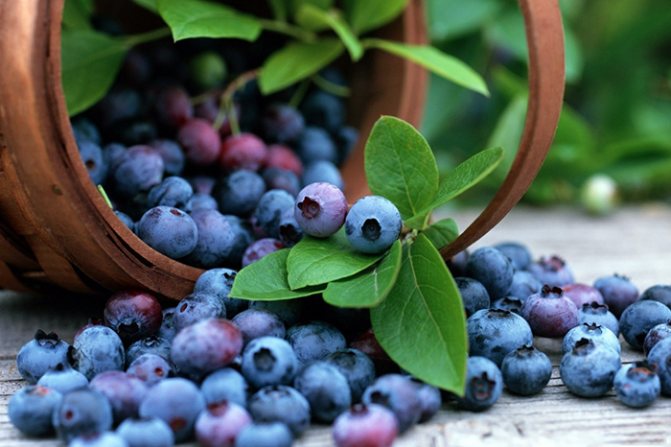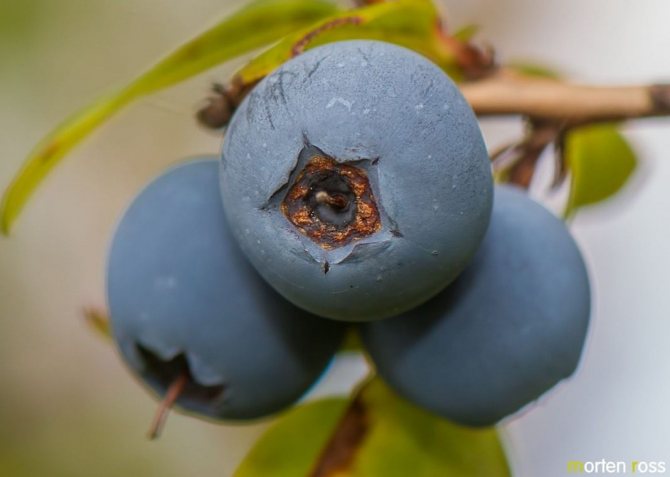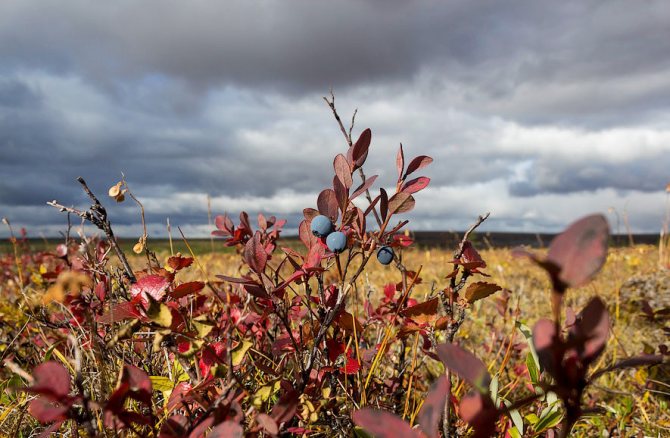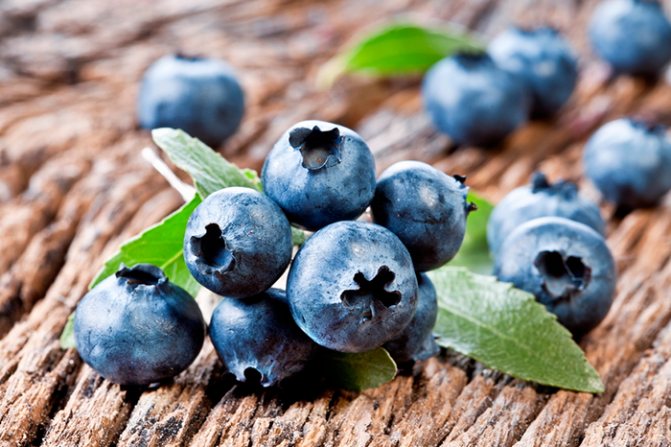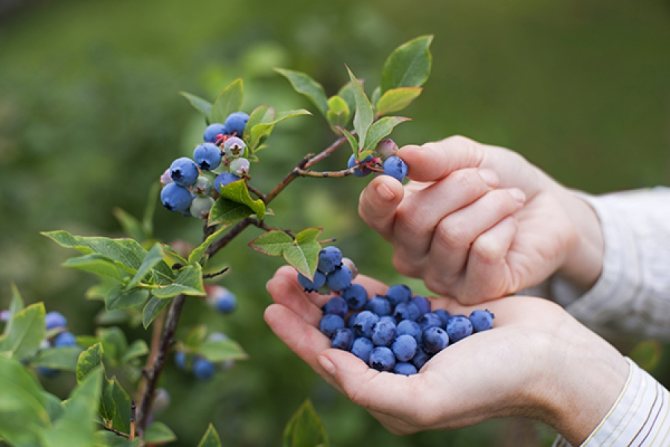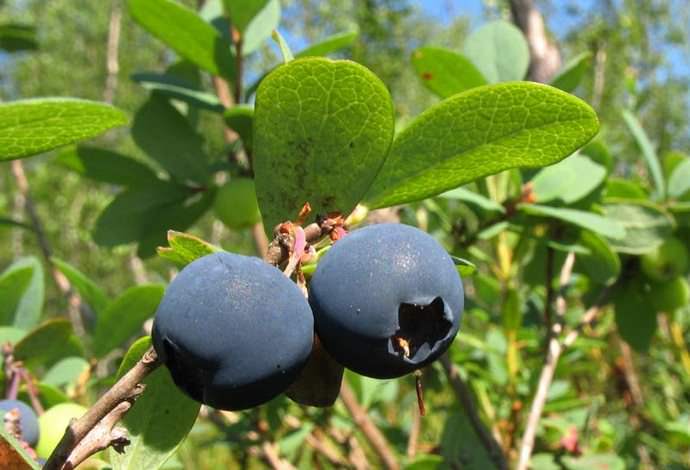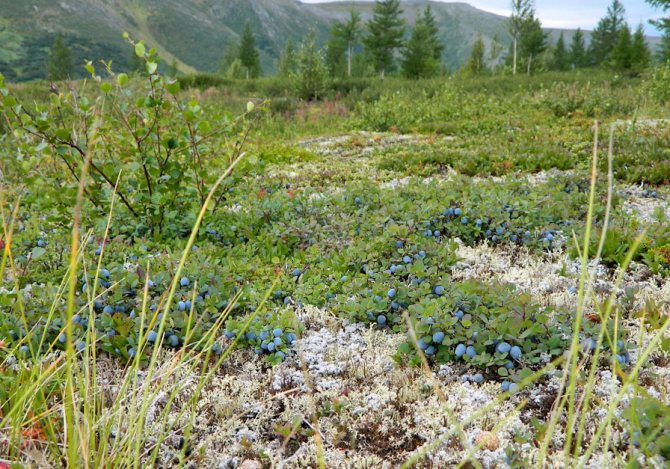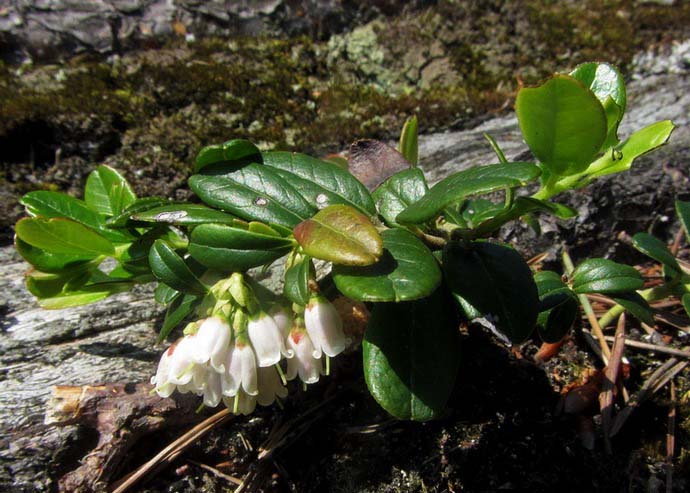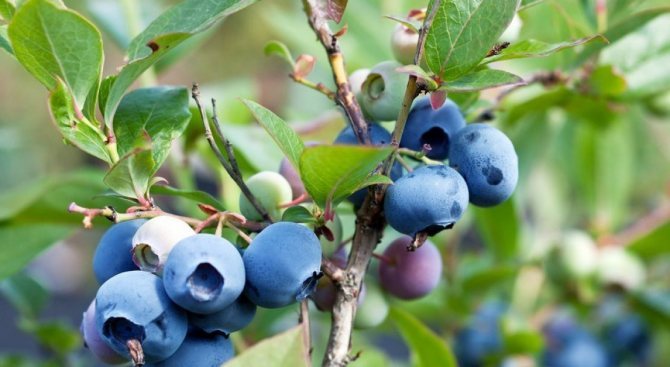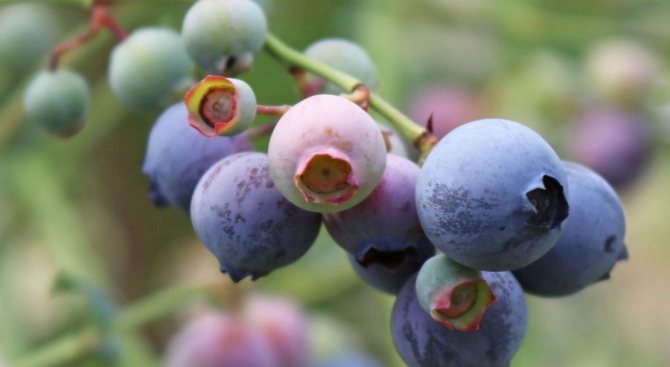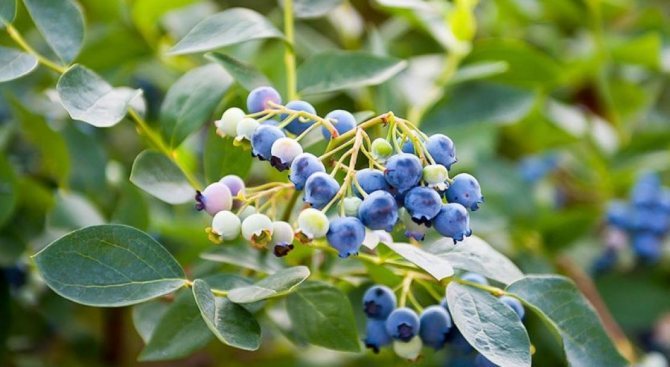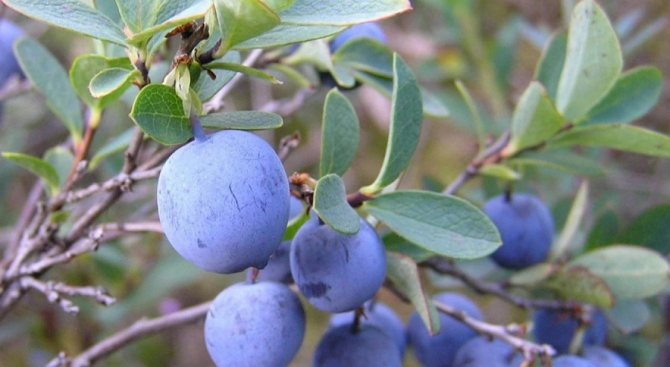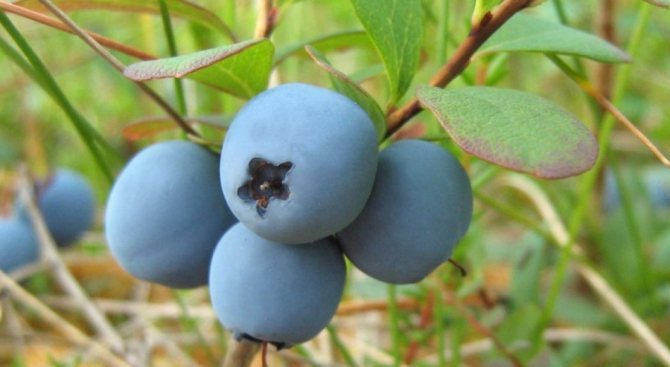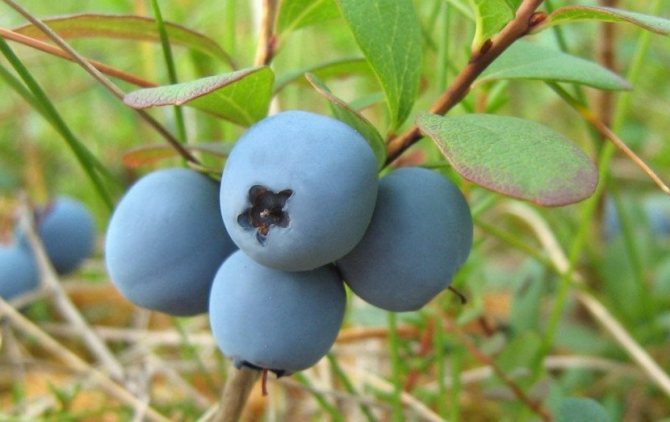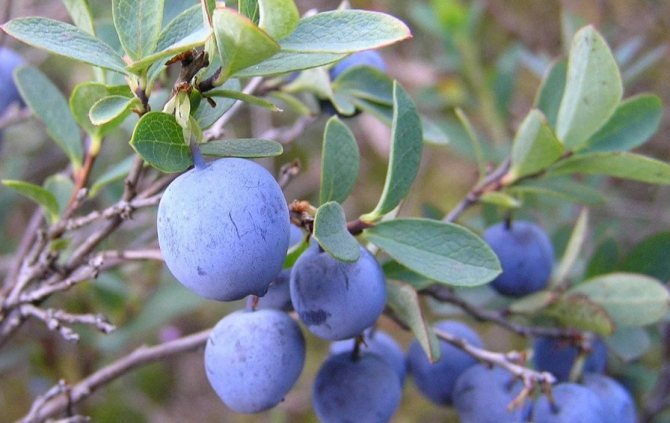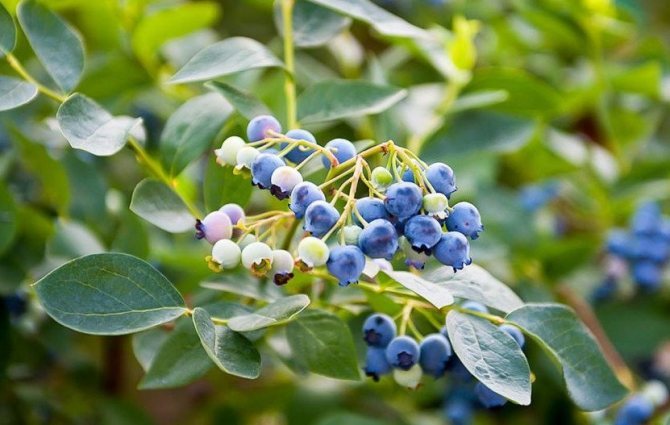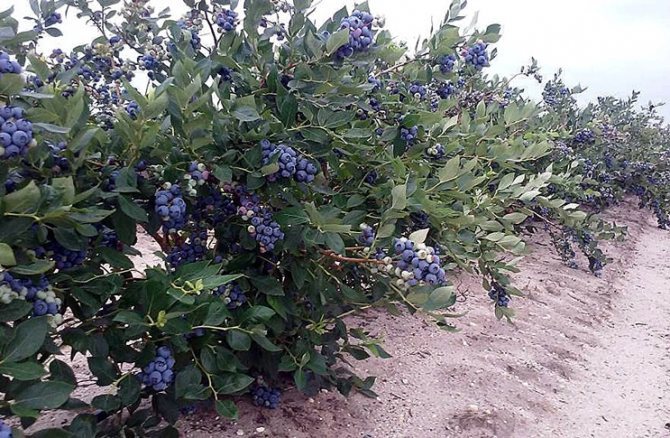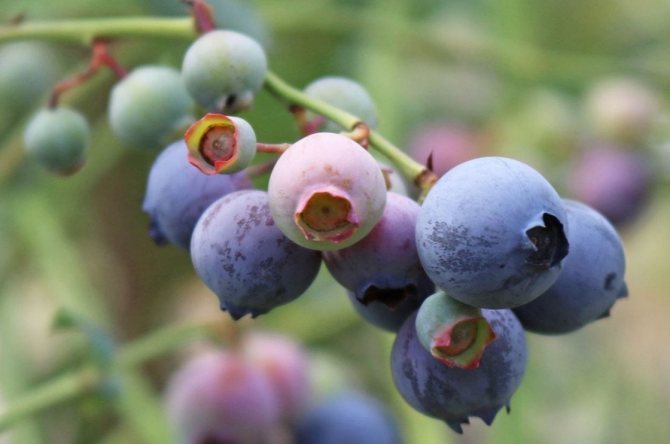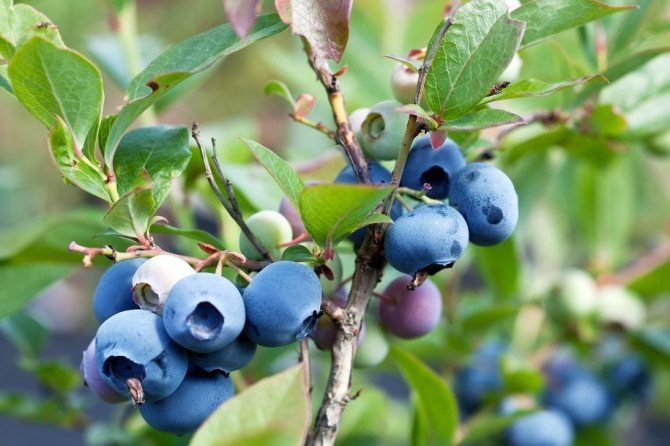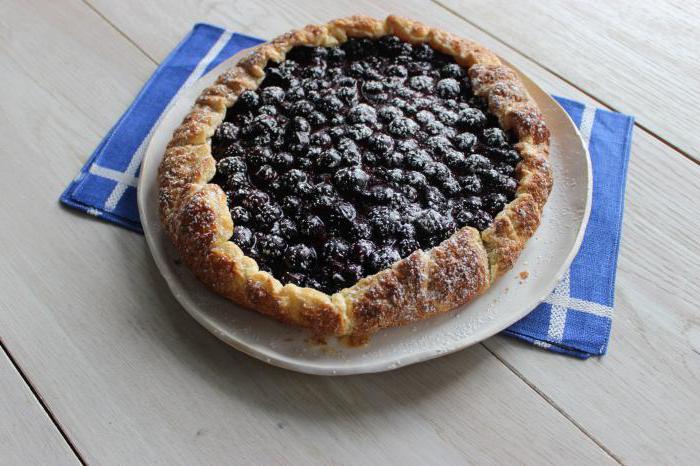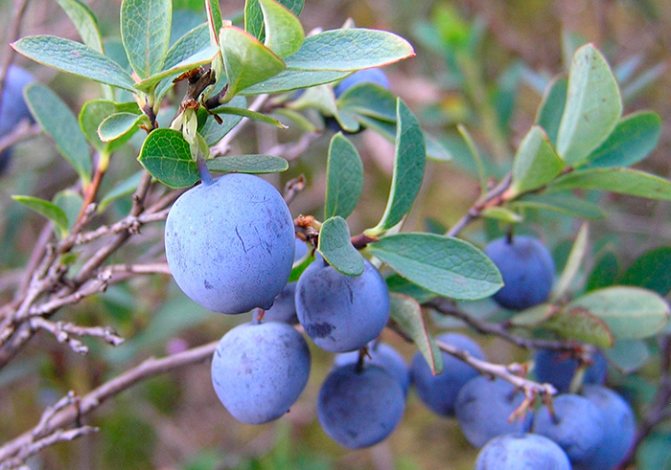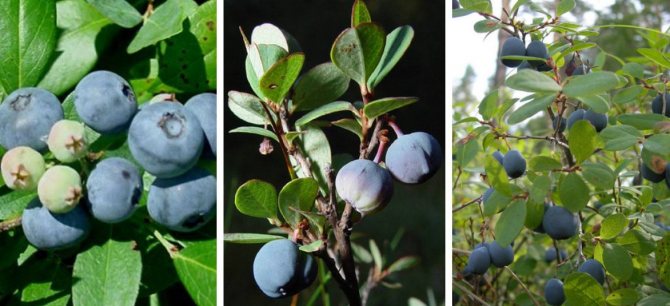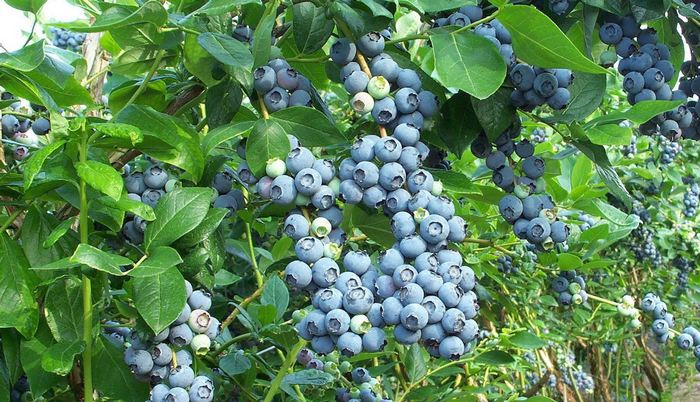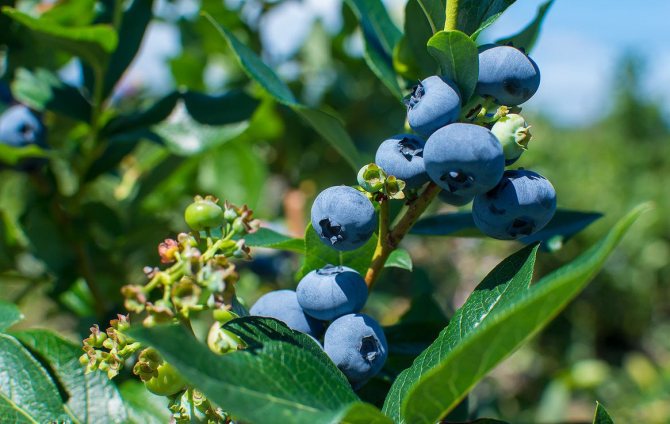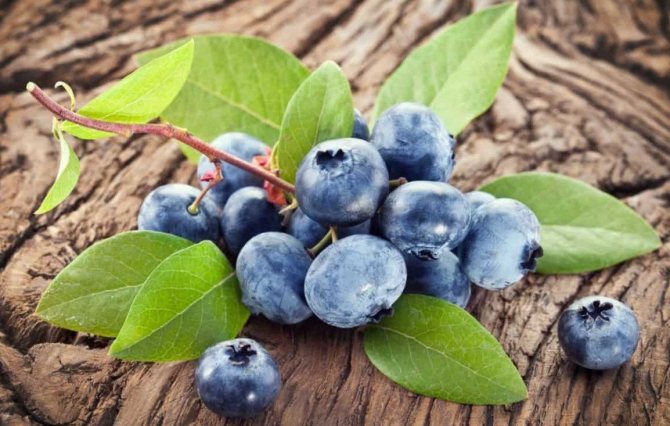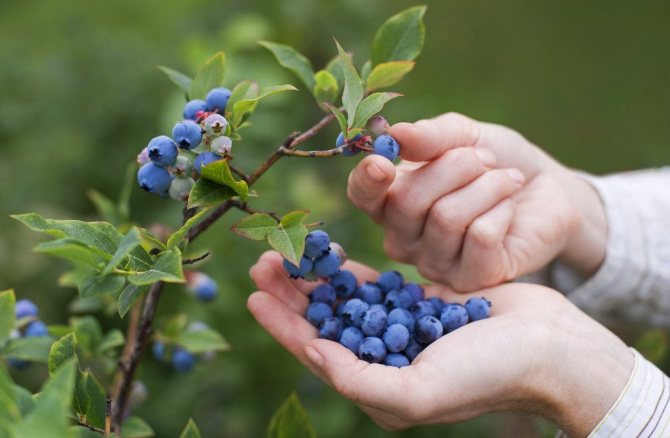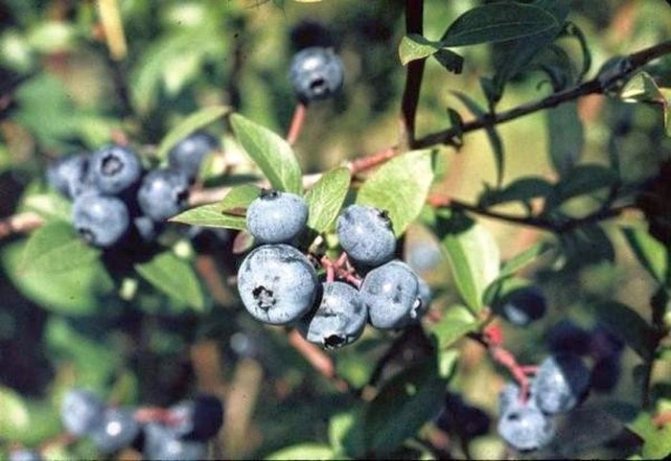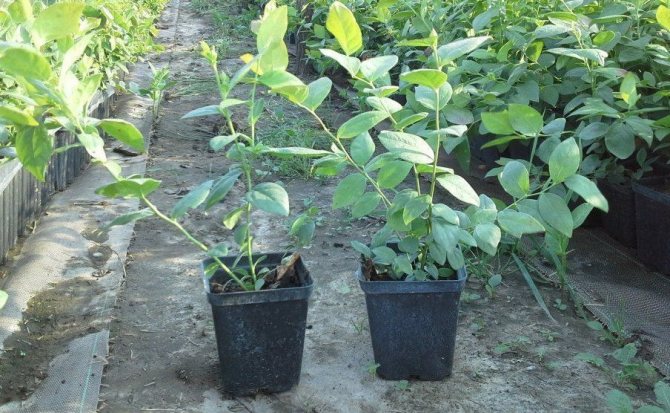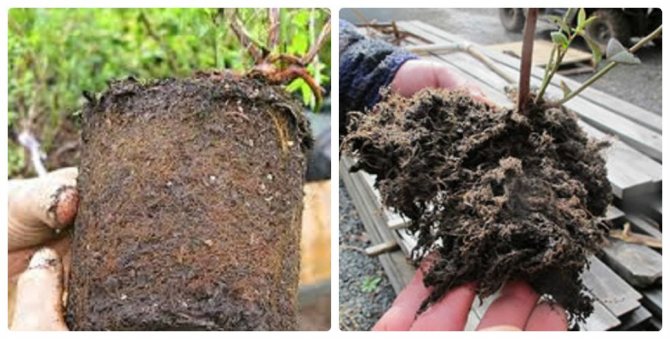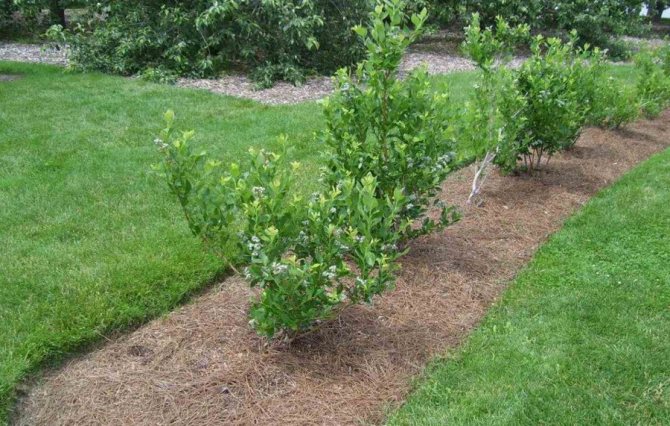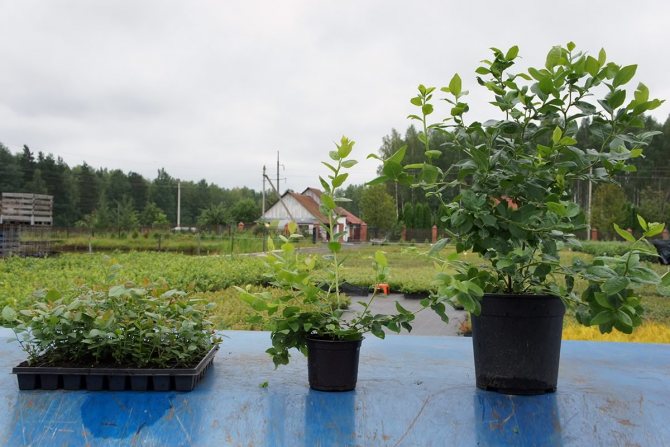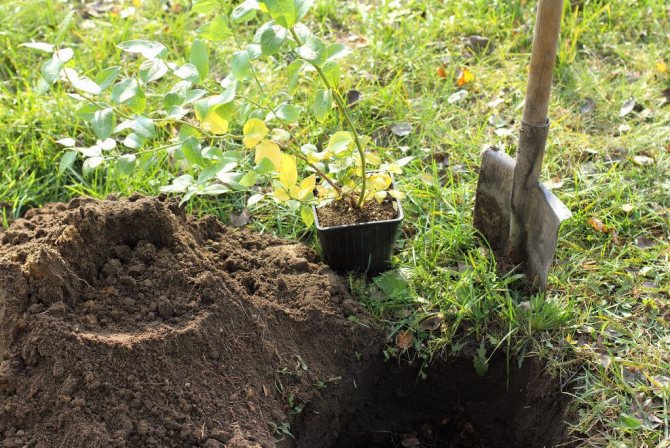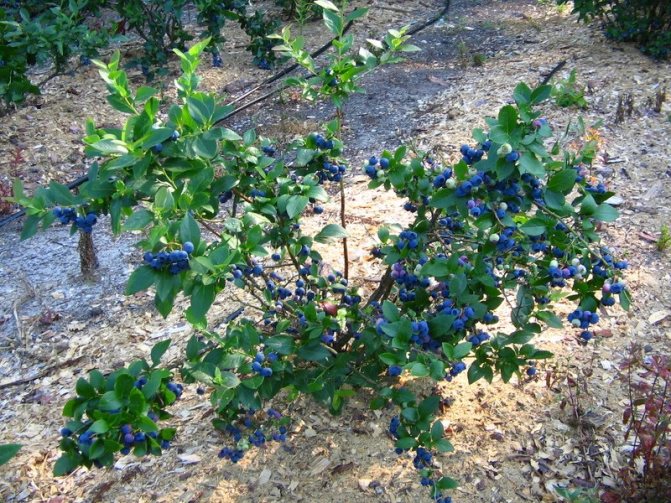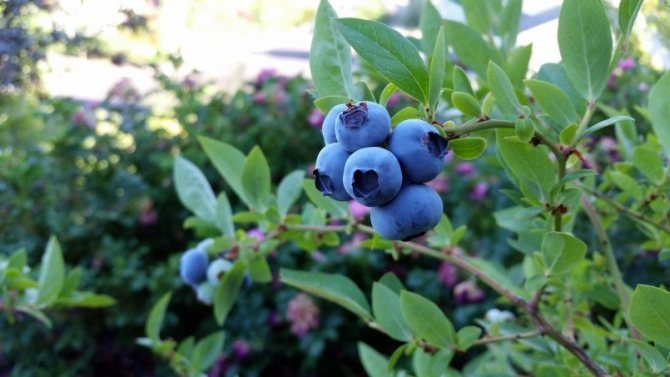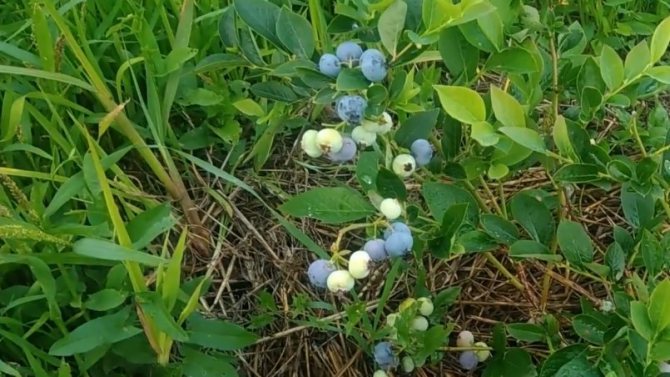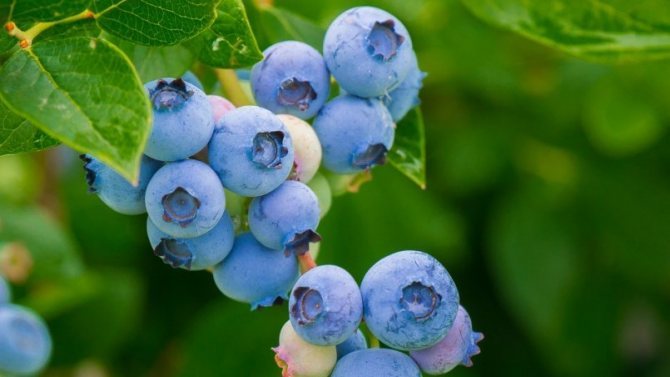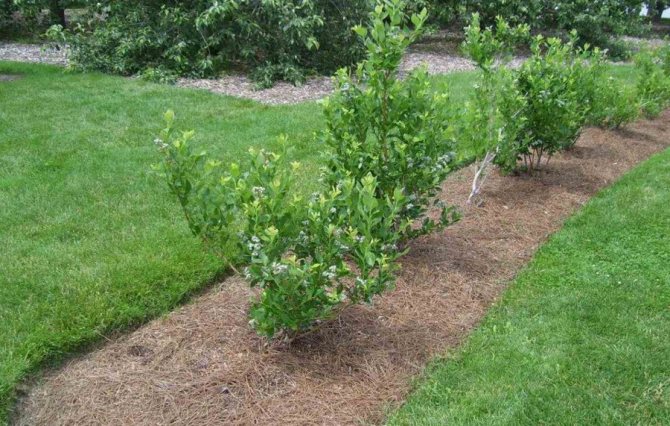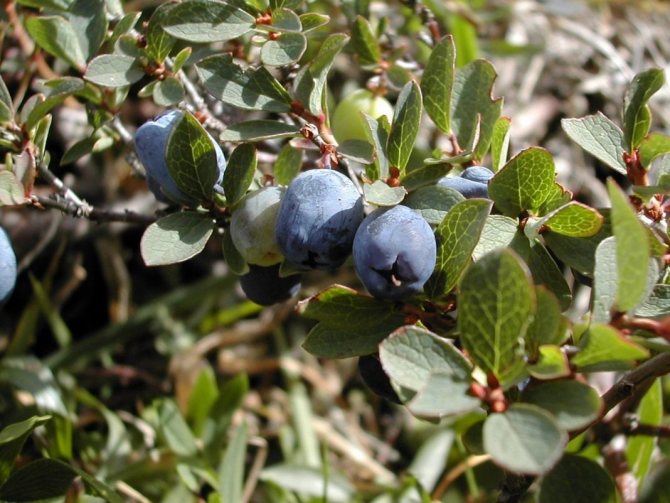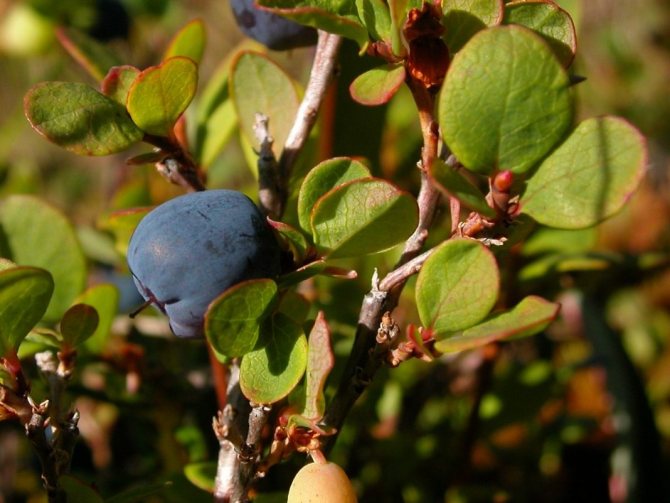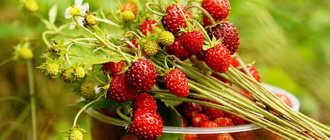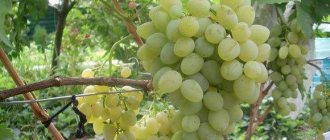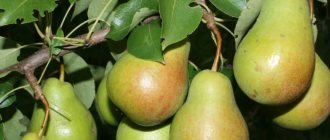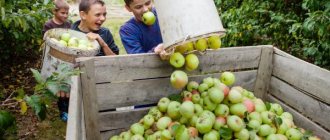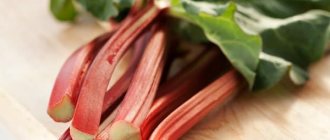Category: Fruit and berry plants
Plant Common blueberry (Latin Vaccinium uliginosum), or marsh blueberry, or swamp, or undersized - type species of the genus Vaccinium of the Heather family. This deciduous shrub is found in temperate and cold regions of the entire Northern Hemisphere - in Eurasia, the species range begins in Iceland and reaches the Mediterranean and Mongolia, in North America it extends from Alaska to California. Among the people, blueberries have many names - drunkard (drunk berry, drunkard, drunkard), gonobel (gonoboe, gonobol, gonobob), cabbage roll (dove), foolish person (fool, fool, foolish person), blue grapes, titmouse. All names with negative connotations were given to blueberries by mistake: people complained that they had a headache (it drives the head in pain, like a hangover - hence the gonobol, foolish person, drunkard, etc.), and the culprit of the headache is actually the ever-growing next to blueberry wild rosemary.
The very same blueberry berry is a valuable natural product that increasingly attracts the attention of gardeners. In addition to common blueberries, which grow everywhere in regions with cool and temperate climates, there is such a species as tall garden blueberry (Vaccinium corymbosum) Is an American relative of common blueberry, which has long become a full-fledged horticultural crop in its homeland. In Canada and the USA, this tasty and healthy berry is much more popular than black currant. Varieties and hybrids of garden blueberries, bred by American and Canadian breeders, are gradually gaining popularity among our gardening lovers, and now Canadian blueberries in a garden in the middle strip or hybrid American blueberries in a country house somewhere in the southern regions of Russia and Ukraine are not such a rarity.
Where grows
In Russia, blueberries or doves grow in areas from the Arctic to the Caucasus. The farther south, the more often it is found in swampy areas. The shrub is unpretentious, even on poor acidic soils it bears fruit well. The creeping variety grows in fires, clearings, there are species of marsh blueberry, water blueberry and undersized blueberry. In America, a tree-like variety is grown, which is convenient for picking fruits. The cultivated garden blueberry is distinguished by an increased size of berries, a sweeter taste, early ripening of the plant.
Garden blueberry - description
Scientists classify lingonberries, cranberries, blueberries and blueberries to the Vaccinium genus, with which some botanists identify blueberries, although not all specialists think this is fair. The root system of blueberries is fibrous, without root hairs, branches are erect, cylindrical, covered with dark gray or brown bark, shoots are green. The common blueberry bush reaches a height of only one meter, the tall blueberry species grows up to two or more meters in height. Small, tough, whole smooth blueberry leaves up to three centimeters long and up to two and a half wide grow in successive order on short petioles. They have an obovate or lanceolate shape with a blunt apex and slightly curved edges downward, the upper side of the leaf plate is bluish-green due to a waxy coating, the lower side with strongly protruding veins of a lighter shade.
Small drooping five-toothed flowers with a pinkish or white jugular corolla up to 6 cm long and 8-10 stamens sit in several pieces on the tops of last year's branches. The berries of common blueberry are oblong, up to 12 mm long and weighing up to one gram, blue with a bluish bloom, thin-skinned, with greenish flesh.The berries of American tall blueberries weigh from 10 to 25 grams, up to 10 kg are harvested from one bush in America, in our conditions, in warm regions and with favorable weather, you can get up to 7 kg of berries from one bush of tall blueberries.
- Tree care in spring
The fact is that not all foreign varieties are suitable for growing in our climatic conditions, since those that begin to bear fruit late only have time to ripen by 30%. Therefore, those who want to grow this wonderful berry on their site are better off cultivating common blueberries or purchasing early and mid-ripening varieties of garden blueberries.
Beneficial features
- antipyretic, anti-inflammatory effect, getting rid of colds;
- recovery of the body after illness;
- a positive effect on the cardiovascular system, strengthening the walls of blood vessels;
- lowering cholesterol levels, blood pressure;
- lowering the risk of malignant tumors, cancer;
- beneficial effect on the gastrointestinal tract, improving metabolism;
- normalization of the pancreas, lowering the acidity of gastric juice with gastritis;
- lowering blood sugar levels in the treatment of diabetes mellitus;
- removal of radioactive metals, protection of nerve cells from destruction;
- relieving tension from the eyes, improving vision;
- protection against age-related changes in memory, increasing concentration of attention;
- weight loss with excess body weight.
Leaves
The berry leaves contain valuable plant steroids and tannins. They have an anti-inflammatory effect, increase the elasticity of the walls of blood vessels, and reduce high blood pressure. A medicinal decoction of blueberry leaves lowers high temperatures, normalizes intestinal health, and serves as a means of preventing cancer. Herbal teas on the leaves save you from constipation, eliminate joint pain, and have a healing effect.
Berries
Fresh fruits are useful for elderly people with pancreatic diseases and vision problems. Fresh juice or juice from blueberries lowers blood sugar levels, restores vision, and prevents the development of glaucoma. Other useful properties of berries:
- magnesium in the composition soothes, reduces the risk of cardiovascular diseases;
- blueberries contain vitamins K, PP and P, which reduce the risk of developing varicose veins, support the function of blood coagulation;
- juice protects the body from harmful radioactive radiation, bad ecology.
Where and how blueberries grow in the forest
In the wild, blueberries are widespread in the northern hemisphere, in particular in Iceland, Great Britain, the Russian Far East, Japan and North America. Most of all, the plant is suitable for a temperate or cold climate - this trait was adopted by many varieties bred by breeders with increased frost resistance.
Did you know? A common companion of blueberries in the forest is wild rosemary, the leaves of which contain a large amount of essential oils that cause intoxication. If a person spends a lot of time in such a place picking berries, he may be intoxicated with the scent of rosemary.
Blueberries grow in nature in small shoots, located along rivers, streams and lakes. It can also grow in large plantations. For example, in Transbaikalia, blueberry mari reach an area of tens of square kilometers. The plant is unpretentious to the composition of the soil, adapts well to poor soils. It grows in forest and mountainous areas, on peat bogs, in wetlands, located on hills.
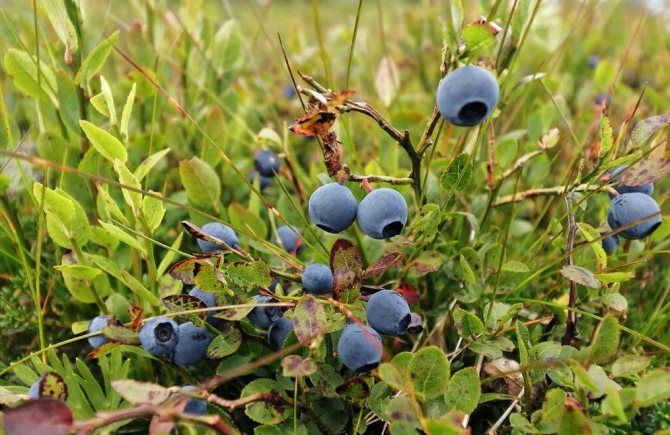
In the forest, blueberries are most often found in untouched nature. Swampy soils, which contain a large amount of coniferous humus, are especially favorable for it. In search of shrubs, take a look at forest glades - blueberries love lighted areas.You should also pay attention to fallen trees, old stumps, where blueberry shoots are often found.
Why blueberries are good for women
In addition to the protective property in poor ecology, the effect of preventing the occurrence of vitamin deficiency and protecting all body systems, in women, the useful berry finds the following application:
- pulp masks prolong youth, restore collagen fibers, cleanse and whiten the skin;
- blueberries are useful for losing weight - they are low in calories, enhances the secretion of gastric juice, a dietary product can be included in desserts or combined with cereals;
- juice from 300 grams of fresh blueberries is able to satisfy the daily requirement in vitamins, it is considered much more valuable than pomegranate;
- during pregnancy, the fruits provide the body with folic acid, ascorbic acid prevents the penetration of infections, magnesium improves sleep and soothes the nervous system;
- useful trace elements in the composition normalize mood swings before menstruation, when carrying a fetus, they form the neural tube of the child.
TOP 10 best blueberry varieties
Extensive experience in gardening has allowed Russian farmers and gardeners to rank the most prolific and resistant varieties:
- Blueberry "Kaz Plishko"... This mid-season variety is the pride of Polish selection. It got its name from the name of the scientist who, in fact, brought it out - Kazimir Plishkevich. Plant height reaches 1.5 m. The shoots of the bush are relatively tough. The berries are dark blue in color, similar to balls. The inside of the fruit is white and has a sweet taste. The average size of one fruit ranges from 2.5-3 cm. Berries ripen at the same time;
- Blueberry Blue Berry... Summer residents and gardeners fell in love with him for a particularly high yield. Every July, the bush presents its owners with juicy dark fruits. The berries grow medium in diameter. It is possible to collect up to 5-7 kg of fruits from one bush in one year. The plant can withstand up to -35 ℃;
- Blueberry Legacy... Especially productive variety. It has an average ripening period and less winter hardiness compared to Blue Berry. The bush itself grows to a height of 2 meters. The fruits are small, however, very tasty. A distinctive feature of the berries is a small scar. They are recommended to be consumed raw. Legacy is a good option for areas with mild winters, which is why it is sometimes called the southern variety;
- Blueberry Polaris - an invention of US breeders from the University of Minnesota. Differs in special frost resistance, because it was created by breeders for cultivation in 7 climatic zones. Thanks to this, the plant grows well in countries such as: Belarus, the northern regions of Ukraine, the Moscow region and the middle zone of Russia. The height of the variety is 1-1.2 m. The berries are small in diameter - up to 14 mm maximum. During the first year of its existence, the plant yields up to 2 kg, but over the years - up to 7-10 kg;
- Swamp blueberry Is a very popular variety that is often found in Russia, as well as in North America and Europe. This blueberry variety is relatively short. Maximum it can reach 90 cm. The leaves are small - from 1 to 2 cm. The oblong berries have white flesh. Sweet and sour on the palate;
- Blueberry Rankocas... The height of the variety can reach 1.5-1.8 m in height. Berries of medium diameter, round. They are light blue in color. Loved by the Russians, thanks to its rich aroma and pleasant taste. Berries ripen in most regions of Russia in August;
- Blueberry Sunrise Is a Canadian tall variety. Since the 80s of the last century, it has been actively used on plantations, small and large farms in the United States. The plant reaches a height of 2 m. The fruits themselves are also large in size. Fruits of this variety can grow up to 20 cm in diameter. They are usually light blue in color and have a small amount of characteristic bloom. The sweet and sour taste of the fruit opens up to a greater extent after cooling;
- Blueberry jorma - the pride of Finnish breeders. The main advantage that this tall garden blueberry can boast is its good winter hardiness. The berry can be from 1 to 1.5 cm in diameter, sweet taste with a slight sourness. The fruit is very rich in anthocyanins. Gardeners can harvest 2-3 times per season;
- Churon blueberry. The bushes of the variety are partially self-fertile. They bloom, in comparison with other varieties, late, therefore they actually do not succumb to the negative effects of pests. The shoots of the plant are erect. It can grow up to 1.6 m. This bush boasts large purple berries with a sweet taste. Providing proper care for her, do not forget that this variety requires cross-pollination;
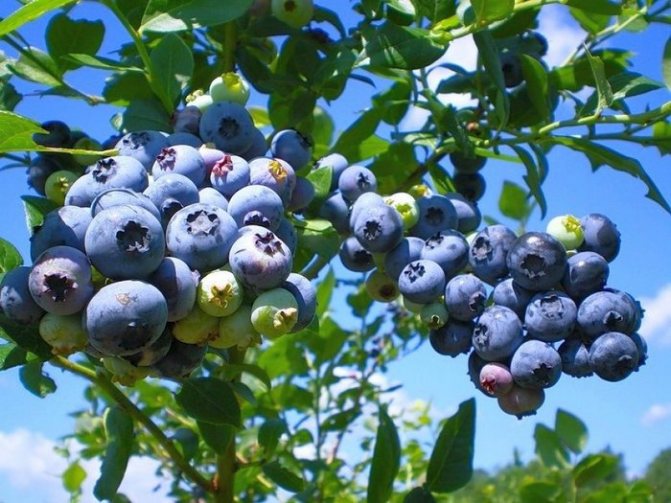

Blueberry Churon - Blueberry Blueberry. It has been used in production since 1967. This blueberry is a low-growing and earthy variety. Blueberries of the Bluetta variety grow to a maximum of 1.2 m and give a good harvest. In one season, the owners can collect up to 9 kg of berries from an adult bush. The dark blue fruits of the plant are rated very highly for their taste.
Breastfeeding blueberries
Fruit drink, infusion of leaves, decoction and juice from blueberries are useful during lactation and feeding a newborn baby:
- natural antioxidants strengthen the immunity of mother and child;
- helps to restore muscle tissue and cope with stretch marks after pregnancy;
- vitamin PP ensures the normal functioning of the nervous system;
- iron serves for the prevention and treatment of anemia, is absorbed completely;
- calms the nerves;
- pectin helps not to gain extra pounds;
- contraindications for taking during lactation are a large number of consumed berries, which leads to diarrhea, bloating, colic in the baby;
- it is necessary to introduce the fruits into the diet gradually - when the baby is three months old, try a few berries and, in the absence of allergies or diathesis, include them in the diet.
Blueberry is a plant of the lingonberry family with fruits with pleasant taste and smell. You can cook jam, jam from the berry and use it fresh. What are the beneficial properties of blueberries, as well as how the plant is valued, you will learn from this material.
Planting garden blueberries
When to plant blueberries
Blueberry planting is carried out both in spring and autumn, but spring planting is more reliable than autumn planting, because during the summer season, blueberry seedlings manage to take root on the site and get stronger so that the risk of their freezing in winter is minimal. In this article, we will introduce you to the plant's agricultural technology and will tell you in detail how to plant blueberries correctly, how to grow blueberries and how to care for blueberries, namely, how to feed blueberries, how to water blueberries and how to propagate blueberries. Growing blueberries is a simple process, it will be more difficult to harvest and preserve the harvest, but we will also tell you about this.


Structure
The berry has an extensive list of minerals and nutrients that have a beneficial effect on the body. It includes:
- vitamins A, B, PP, K and E;
- tannins;
- alimentary fiber;
- pectins;
- flavonoids;
- phenols, sugars and plant pigments;
- pectin;
- minerals (iron, phosphorus, magnesium, sodium, potassium).
Blueberry is a low-calorie berry, nutritional value is 57 kcal. Therefore, it is recommended to add it to the dietary menu.
Useful properties of berries and blueberry juice
Due to its rich composition, the use of culture has a positive effect on almost all body systems. Beneficial features:
- It has choleretic and diuretic qualities, which helps to reduce weight and normalize the work of all organs.
- Antioxidants contained in fruits prevent aging of the body and improve the activity of the heart and blood vessels.
- Prevents the formation of tumors.
- Due to the content of vitamin C, the fruits are used to prevent scurvy.
- Regular consumption of blueberries can improve vision. The fruit relaxes the eye muscles and helps fight glaucoma.
- Cleans the body of toxins and stabilizes metabolism.
- Improves the functioning of the digestive system. Intestinal motility is improving.
- Fruits slow down the aging of nerve cells, improve mental capacity and memory.
- Lowers blood pressure.
- Eating the fruit leads to a decrease in blood glucose levels.
- Increases appetite, promotes the release of a sufficient amount of gastric juice.
- Raises the tone of the body and relieves nervous tension.
- Increases the body's defenses and improves its resistance to viruses and bacteria.
- If diarrhea or liver disease occurs, it is useful to drink 1/2 glass of juice 3 times a day.
- Fresh blueberry removes heavy metal salts from the body and neutralizes the effects of radiation. This ability of the berry can be used by workers in hazardous industries.
Thanks to the healing properties of blueberries, its juice also has positive qualities. Doctors recommend using it 1-2 times a week. The drink contains a large amount of vitamins and minerals. Due to this, the juice has anti-inflammatory properties and reduces the manifestation of fever.
At the same time, it does not have any restrictions, therefore, the drink is widely used in dietary nutrition. The medicinal qualities of culture are used not only for therapeutic purposes, but also for the prevention of many diseases.
Adding fruits to the child's menu
The beneficial properties of blueberries for children are manifested in the saturation of the growing body with all the necessary minerals and vitamins.
Due to the absence of allergens, it can be given to infants up to one year old. Initially, the berry is included in the menu as a puree. It is added to cereals or mixed with other fruits. Reception begins with 1 teaspoon, gradually the amount increases. The serving size must be agreed with the pediatrician.
It is forbidden to eat berries in large quantities so as not to cause nausea, vomiting or dizziness.
Frost protection for blueberries
The aerial part of blueberries is still sensitive to cold temperatures. Within -18 ..- 20 ° С, young tops, and with prolonged snowless low temperatures - and the entire aboveground mass, can freeze out. To prevent this from happening, for the winter the plants are bent as far as possible so as not to break the branches, and they are covered with burlap or lutrasil. Film cannot be used. Spruce branches or loose snow are thrown onto the shelter. In the spring, after removing the shelters, before the buds swell, sanitary pruning is carried out, removing the frozen tops of the stems.
Blueberries during pregnancy
During gestation, adding a berry to the menu is recommended for all women. Due to its beneficial properties, blueberries have the most positive effect during pregnancy. This is due to the content in the berry of vitamins, B, P, PP and folic acid, which is sometimes called the "female hormone". This substance forms new cells and prevents the development of pathologies in the fetus.
In addition, the fruits have such a beneficial effect:
- The content of vitamin C in blueberries stops the development of colds, which adversely affect the body of the fetus and the expectant mother.
- Reduces blood sugar, which is especially necessary for women who suffer from diabetes.
- The iron contained in the berry is able to maintain normal hemoglobin levels. Rutin does not allow an increase in blood pressure and gives elasticity to the capillaries.
- The berry has a positive effect on vision. Due to the complex of mineral substances, blueberries have anti-inflammatory and choleretic properties.
But you should not abuse the berry during this period, in order to avoid the occurrence of allergic reactions and intoxication in the child. During pregnancy it is enough for a woman to eat no more than 80-100 g per day. This rate will be enough to meet the needs of the body.
The beneficial properties of blueberries during pregnancy and lactation are manifested in the saturation of vitamins and minerals for both the child and the mother. Eating excessive amounts of berries is not recommended due to allergies.
Benefits of blueberry leaves
Not only fruits have healing properties. The leaves of the plant are often used to prepare medicinal decoctions and infusions. Traditional medicine has many recipes that are capable of:
- normalize the digestive process;
- cleanse the body and have a disinfectant effect;
- eliminate sleep disorders and disorders of the nervous system;
- lower blood glucose and cholesterol levels;
- have a beneficial effect on the heart and blood vessels;
- reduce excessive appetite and prevent overeating;
- strengthen the human immune system, provide a preventive effect for colds and infectious diseases.
A decoction, infusion or tincture is prepared from blueberry leaves. Drinks can be drunk without restrictions, if there are no contraindications.
To prepare a medicinal drink, you need the following:
- In a glass of boiling water, take the dried leaves of the plant (50 g) in a crushed state.
- Brew for 2-3 hours.
- Strain the broth and drink a tablespoon 5-6 times a day before meals.
The course of treatment with a decoction of blueberries should be no more than 1 month, then a break is taken and, if necessary, the procedure is repeated.
A decoction of blueberry leaves is a prophylactic agent for many diseases: diseases of the gastrointestinal tract, heart and blood vessels. To normalize blood pressure, you can drink it along with fresh berries. The daily norm of berries is 100-150 g.
How to plant correctly
Blueberries are planted with two or three year old seedlings. The correct distance between the planting holes should be 1.5–2 meters, between rows - 3 meters.
The main stages of planting blueberries:
- They dig a hole 50 cm deep and 80 cm wide.
- Fill in a mixture consisting of soil taken from under conifers, moss, peat and fertile soil from your site.
- Add 50 grams of sulfur.
- Seedlings in containers are placed in water for 15 minutes, a well-moistened clod of earth will be easier to remove from the container.
- The bush taken out of the pot is placed in a hole, sprinkled with soil, lightly tamped and watered.
- Sprinkle with mulch.
If the groundwater is close, it is imperative to place a drainage in the planting pit. In addition, the area where the blueberry grows must be sufficiently protected from the wind. There should be plenty of sunlight, otherwise the berries will become small and sour.
Advertisement 2
Winter blanks
Blueberries and jam have beneficial properties. In this form, its medicinal qualities persist for a long time.
To prepare the jam, grind the berries with a blender until smooth. Add sugar. Divide into containers and refrigerate.
This composition retains all the healing properties of blueberries.
There is a method of making jam when the fruits are cooked. This requires the following ingredients:
- Blueberries - 1 kg.
- Granulated sugar - 1 kg.
- Water - 100 ml.
Sort the fruits thoroughly and wash. Boil the syrup from sugar and water and boil for several minutes. Then put berries in it, boil for 10 minutes and arrange in sterile jars.
Jam can be used as a prophylaxis for colds and infectious diseases, for diseases of the stomach and bladder.
Soils for growing blueberries
Under natural conditions, blueberries grow on sandy and marsh peat bogs, raised (they are more acidified) with a fairly high organic content.
In order to create appropriate conditions for blueberries on your own plot, especially in regions with soils of neutral acidity, it is necessary to artificially acidify the soil in the area of \ u200b \ u200bthe root system. This is easy to accomplish in regions where there are peatlands and more difficult where there are no appropriate conditions for their formation. How to proceed?
A planting pit of sufficiently large dimensions 60x60x50-80 cm is prepared for blueberries. A good high drainage is arranged at the bottom. In areas with peat bogs, a 1: 1 soil mixture with high-moor peat is prepared. You can add coniferous sawdust, sulfur, no more than 60 g per pit, and sand to the peat. It is recommended to check the acidity of the potting mix with litmus or test strips.
If the soil is loamy and heavy, then add a bucket of completely decomposed humus as a baking powder. For these purposes, mature compost can be used. The mixture is thoroughly mixed and the pit is filled. The inner edges of the pit are loosened. In order not to form over time a dense "flask" between the soil mixture and the walls of the planting pit, which will become an obstacle to the access of water and air in sufficient quantities to the roots of plants. The soil mixture in the planting pit rests / matures for 1-2 months, and only after that can blueberry seedlings be planted. Mineral fertilizers are not applied during planting.
If peat bogs are absent, they are created artificially. The soil is mixed with organic matter, coniferous sawdust or needles. It is better to use waste pine needles and sand as baking powder. Dilute 60-70 g of oxalic or citric acid in 10 liters of water. They can be replaced with vinegar 9%, 100 ml or the same amount of apple cider. The acidity of the solution should be no more than 3.5-4.0%. The pit must be filled with potting soil and poured into a bucket of acidic solution. Check the acidity of the resulting soil mass with an indicator or litmus strip. An acidic solution can be added if necessary. Mineral fertilizers are not applied. The soil is left to “ripen.
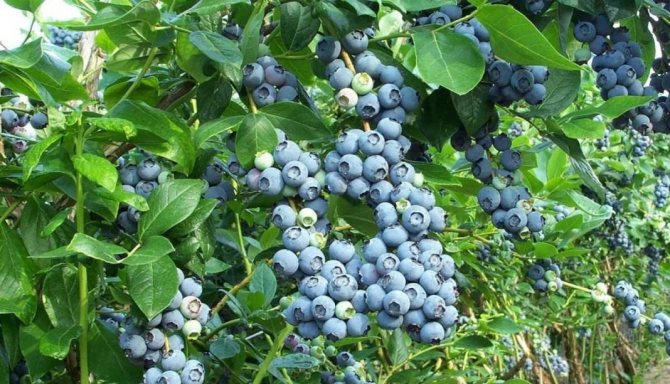

Tall blueberries, garden
Eating during a diet
With its medicinal properties, blueberries are used for weight loss. It can be classified as dietary food. The polyphenols contained in the berry contribute to the breakdown of body fat. Blueberries burn off excess pounds and prevent the formation of new ones.
The fruits must be consumed in limited quantities to get the benefits. The daily intake of berries is 100-200 g. To achieve the result, you need to go in for sports.
Together with the berry, you can drink tea from blueberry leaves, use fruit drinks. It is good to drink fresh fruits with milk, which allows you to have a beneficial effect on intestinal motility.
Features of the
We have already completed the description of the blueberry plant. We also know where the berry grows and how. It remains to consider certain subtleties that not everyone knows about. If you plant a plant at home, then for a good harvest, it is advisable to lay a dense layer of mulch between the bushes. It should consist of leaves and sawdust - that will be enough. Moss can also be added, which is beneficial, but it is unlikely to grow under normal conditions. The large organic layer solves two problems at once. Firstly, it creates an ideal moisture regime for blueberries, and secondly, it maintains the desired level of acidity. In this case, you do not even need to acidify the soil in an artificial way.
A serious problem is that the plant often survives by symbiosis with fungi. This interferes with the cultivation. However, fungi can appear in moist soil, where there is a lot of organic matter. They are unlikely to grow on clean, good soil, so the most logical thing is to simply bring mushroom spores from the territory where they grew. To do this, it is enough to go to the forest, to find a place with high humidity, but without swampiness.As a rule, in such an area there is a thick litter of a perennial layer of organic matter.
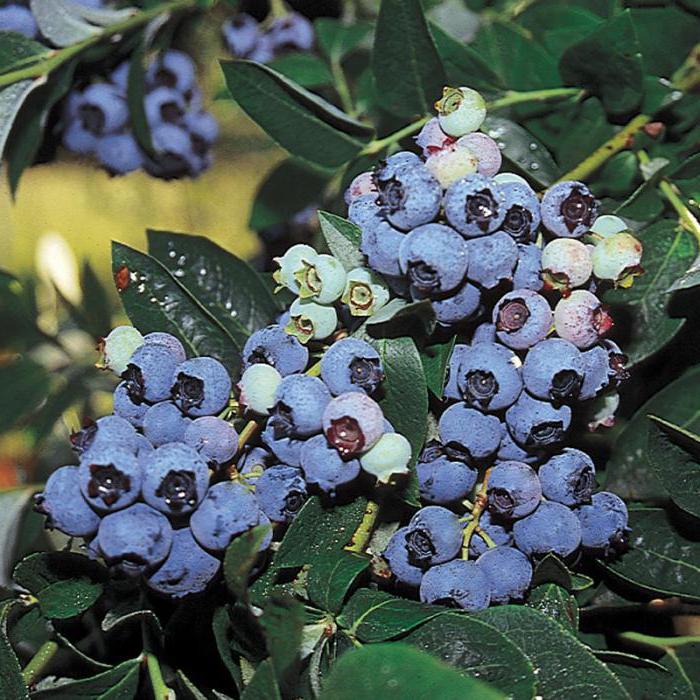

Fruits in cosmetology
Due to its beneficial properties, blueberries can be used not only to improve the health of the body. The fact that this plant has a beneficial effect on the condition of the skin has been known for a long time. Therefore, the culture is used for the preparation of facial care products.
The beneficial properties of blueberries for women are evident in recipes based on the addition of berries. Masks will preserve the beauty of the face and prolong the youthfulness of the skin. Flavonoids protect it from ultraviolet radiation. They are able to cleanse and whiten the skin of the face.
To prepare the mask, it is necessary to squeeze the juice from the berries. Combine in equal proportions with sour cream and cottage cheese. Apply the mass to the skin of the face. Soak for 20 minutes, rinse with warm water. Such a mask will restore the skin to a radiant look and get rid of fine wrinkles. But in order to achieve maximum effect, it is recommended to apply the product at least once a week.
Content
- Listen to the article
- Description
- Planting blueberries When to plant
- Soil for blueberries
- Planting blueberries in spring
- Planting in autumn
- Blueberry care Growing garden blueberries
- Pests
What plant varieties exist
A berry growing in nature has the name or marsh. It is from such bushes that the harvest takes place in forests and swamps.
The first garden varieties were delivered from America. The blueberry bush was tall and was up to 2-3 m in height. Currently, many varieties of berries are known that are cultivated in summer cottages.
Garden blueberries are especially popular, the properties of which are constantly used for medicinal purposes. But they also grow it for cooking. In the northern regions, a bush called "Canadian blueberry" is widespread. This plant is frost-resistant and has unpretentiousness and juicy fruits.
For planting, choose a well-lit place with loose soil. She loves acidic soils, and on neutral and alkaline soils, blueberries grow poorly and do not multiply. It should be planted with a large clod of earth; with bare roots, the plant dies.
Blueberry care
Growing garden blueberries
Several times a season you will have to loosen the soil in the area with blueberries to a depth of about eight centimeters, but try not to overdo it, as too frequent loosening can dry out your blueberries, and too deep can damage the horizontally located root system, which is only fifteen centimeters from the surface. ... And that is why mulching the soil on the site is of particular importance. You can loosen the soil without removing the mulch, which must be replenished every two to three years. Do not let weeds grow in the area with blueberries; remove them immediately after detection.
Storage rules
Blueberries have tender berries. And in order not to lose all its medicinal properties, it is necessary to choose the correct storage method.
The fruits should be frozen. This blueberry retains all its medicinal properties and can be used for the preparation of compotes, fruit drinks and jelly. Most often it is used as a filling for pies.
In some cases, blueberries are dried. You can store it in glassware in a dark room. Dried fruits, like frozen ones, fully retain their healing properties and can be used to treat various diseases.
Fresh blueberries can be stored in the refrigerator. To do this, you must choose a container with a tight lid. Store at 0-5 degrees for 2 weeks.
With any storage method, blueberries are best preserved fresh.
Reproduction
You can propagate blueberries by seeds, layering or cuttings.
Method 1: cuttings
Lignified cuttings are prepared from December to March. They are planted in a greenhouse, pre-soaked in a growth stimulant solution, for example, in Kornevin. The soil must always be moist. By the end of August, the film is removed from the greenhouse, at the end of October the bushes are mulched with peat and covered for the winter. In the spring, the seedlings can be moved into pots for later cultivation.
Method 2: by seeds
The seeds are obtained from well-ripened berries. The fruits are kneaded by hand and washed; those seeds that were at the bottom of the container with water are selected and dried on filter paper.
Before sowing, the seeds are stratified. To do this, they need to be placed in wet sand or moss and removed to a cool place with a temperature of 3 to 5 C ° for 90 days.
In spring, seeds are sown in containers filled with peat and sprinkled with sand on top. After that, the box with the seeds is covered with glass or foil and placed in a bright, warm place. Crops are regularly watered and aired.
After emergence, after about 4 weeks, the film is removed. When three real leaves appear on the seedlings, they can be planted in pots. Seed propagation of blueberries is a long and laborious process used by breeders to develop new varieties.
Method 3: layering
With this method, the lower branches of the blueberry are gently pressed to the ground, sprinkled with sawdust and soil. The best period for this is April-September, when the bush is actively growing. This is a long process, the branches will take root only after 2-3 years. Only then can they be separated from the mother plant and sent for growing.
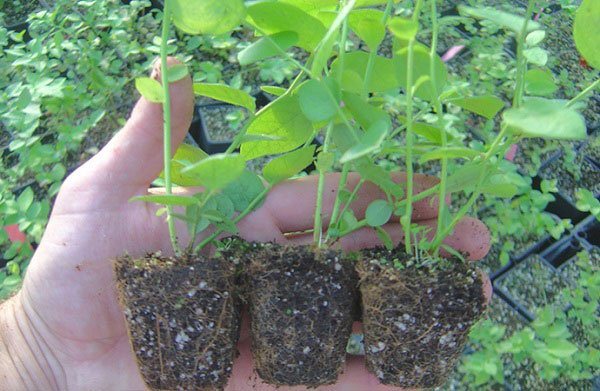

When transplanting into the ground, it is important not to damage the roots.


